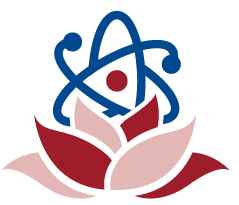| ciliate རྫི་སྤུ་ཅན། | biol. A single-celled animal of a large and diverse phylum distinguished by the possession of cilia or ciliary structures. | ཆེ་ཞིང་སྣ་ཚོགས་རང་བཞིན་ཅན་གྱི་སྲོག་ཆགས་ཀྱི་སྡེ་ཞིག་ཏུ་གཏོགས་ཤིང་རྫི་སྤུའམ་རྫི་སྤུ་དང་འདྲ་བའི་ལུས་ཀྱི་བཀོད་པ་དང་ལྡན་པའི་ཕྲ་ཕུང་གཅིག་ལྡན་གྱི་སྲོག་ཆགས་ཤིག་ལ་གོ (མིག་གི་རྫི་མ་དང་འདྲ་བའི་སྤུ་དང་ལྡན་པའི་གདོད་མའི་སྲོག་ཆགས་ཤིག) |
| ciliary muscle རྫི་ཁྱིམ་ཤ་གནད། | biol. The small muscles that permit the lens to change its shape in order to focus on near or distant objects. | ཐག་ཉེ་རིང་གི་དངོས་པོ་ལ་དམིགས་གཏོད་ཐུབ་པའི་ཆེད་དུ་དྭངས་ཤེལ་གྱི་བཟོ་ལྟ་བརྗེ་སྒྱུར་བྱེད་མཁན་གྱི་ཤ་སྒྲིམ་ཆུང་ཆུང་རྣམས་ལ་ཟེར། |
| ciliary body རྫི་ཁྱིམ། | biol. A thickened portion of the vascular coat of the eye located between the choroid and the iris. | རྩ་སྐྱི་དང་། འཇའ་སྐྱི་གཉིས་ཀྱི་དབར་དུ་གནས་ཤིང་མིག་གི་སྦུག་ལྡན་ཤུན་པའི་ཆ་ཤས་མཐུག་པོ་ཆགས་པ་ཟིན་པ་ཞིག |
| cilia རྫི་སྤུ། | biol. One of the very small parts like hairs on the surface of a cell that move regularly and keep the surrounding liquid moving around it or help an organism with only one cell to move. | ཕྲ་ཕུང་ཞིག་གི་ཕྱི་ངོས་སྟེང་གི་སྐྲ་ལྟ་བུའི་ཧ་ཅང་ཆུང་བའི་ཆ་ཤས་གཅིག དེ་རྟག་ཏུ་གཡོ་འགུལ་བྱེད་པས་རྫི་སྤུའི་མཐའ་འཁོར་གྱི་གཤེར་གཟུགས་རྣམས་ཕར་ཚུར་འགུལ་དུ་འཇུག་པའམ། ཕྲ་ཕུང་གཅིག་རང་ལྡན་པའི་སྐྱེ་དངོས་རྣམས་འགུལ་སྐྱོད་བྱེད་པར་རམ་འདེགས་བྱེད་ཀྱི་ཡོད། |
| cider ཀུ་ཤུའི་ཆང་། | biol. | |
| chymotrypsin ཁི་མོ་བརྡར་སྤྲི། | biol. A digestive enzyme that breaks down proteins in the small intestine. It is secreted by the pancreas and converted into an active form by trypsin. | རྒྱུ་ཆུང་གི་ནང་ནས་སྤྲི་རྫས་ཆ་གསེས་གཏོང་བའི་འཇུ་བྱེད་སྨིན་རྫས་ཤིག འདི་ནི་གཤེར་རྨེན་གྱིས་གློད་འདོན་བྱེད་ཅིང་བརྡར་སྤྲི་ཡིས་སད་སློང་བྱེད་ཀྱི་ཡོད། |
| chronological age དུས་རིམ་ལོ་ཚད། ན་ཚོད། | biol. The number of years a person has lived, used especially in psychometrics as a standard against which certain variables, such as behavior and intelligence, are measured. | མི་ཞིག་འཚོ་གནས་བྱས་པའི་ལོ་ཚོད་ལ་གོ་ཞིང་། བྱེ་བྲག་ཏུ་སེམས་ཁམས་རིག་པའི་ཚད་འཇལ་དུ་གཤིས་སྤྱོད་དང་ཤེས་རབ་ལྟ་བུའི་ཁྱད་ཆོས་ཚད་འཇལ་བའི་གཞི་འཛིན་སར་བེད་སྤྱོད་བྱེད། |
| chronic stress སེམས་ངལ་གྱི་གཅོང་ནད། | SEE Learning | |
| chronic stress གཅོང་གནོན། | biol. A state of prolonged tension from internal or external stressors, which may cause various physical manifestions—e.g., asthma, back pain, arrhythmias, fatigue, headaches, hypertension, irritable bowel syndrome, ulcers—and suppress the immune system. | ཕྱི་ནང་གཉིས་ཀྱི་གནོན་རྐྱེན་ལ་བརྟེན་ནས་རྒྱུན་རིང་པོར་བྱུང་བའི་གནོན་ཤུགས་ཀྱི་གནས་བབ་ལ་གོ་ཞིང་། ལུས་ཁམས་སུ་ནད་རྟགས་དབུགས་བསགས་དང་། རྒྱབ་གཟེར། སྙིང་གི་ལྡིང་ཚད་མི་སྙོམ་པ། ངལ་དུབ། མགོ་ན་བ། ཁྲག་ཤད་ཚད་བརྒལ། ཁོག་སྨད་མི་བདེ་བའི་རྟགས་འདུས། རྨ་འབྲུམ་བཅས་འབྱུང་བ་དང་། ནད་འགོག་མ་ལག་གི་མགོ་གནོན་པར་བྱེད། |
| chronic phase རྙིང་རིམ། | biol. | |
| chronic liver disease མཆིན་པའི་ནད་རྙིང་། མཆིན་པའི་གཅོང་ནད། | biol. | |
| chronic liar རྫུན་རྐྱལ། | | |
| chronic inflammation གཉན་ཚད་རྒྱས་པའི་གཅོང་ནད། | SEE Learning | |
| chronic disease གཅོང་ནད། ནད་རྙིང་། | biol. Any slowly progressing and persistent disease or condition. | དྲག་སྐྱེད་དཀའ་བའམ་ཧ་ཅང་དལ་བུའི་སྒོ་ནས་དྲག་སྐྱེད་འབྱུང་བའི་ནད་དམ་གནས་སྟངས་གང་རུང་ལ་ཟེར། |
| chronic ཡུན་གནས། གཅོང་རྐྱལ། | biol. Lasting for a long period of time or marked by frequent recurrence, as certain diseases | ནད་ངེས་ཅན་ཞིག་ལྟ་བུ་ཡུན་རིང་དུ་གནས་པའམ་ཡང་ནས་བསྐྱར་དུ་འབྱུང་བ། |
